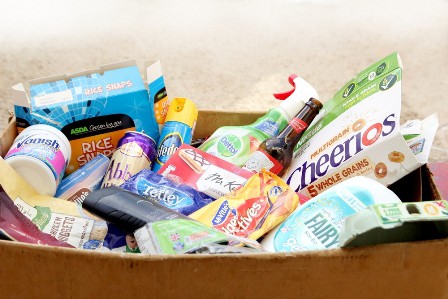OPINION: Robbie Staniforth, head of policy at compliance specialist Ecosurety looks at the options for extended producer responsibility as set out in the government’s consultations on the Resources and Waste Strategy.

Robbie Staniforth, head of policy, Ecosurety
With 90 questions in Defra’s consultation into reforming the system of extended producer responsibility (EPR) for packaging, it is easy to get dragged into the detail.
How responsible for litter should producers be? Who should modulate the packaging fees, and how? Should only one business in the packaging production phase be obligated? Why are targets in 2025 lower than in 2022? And that’s before you even get to how EPR interacts with other policies, like “consistent collections” or a deposit return scheme.
However, we shouldn’t let this detail distract us from what is arguably the most important factor in the EPR consultation is how the system of governance will work.
Buried away in the consultation (Part C, Question 7, page 71) Defra has attempted to tackle the question of how our EPR system should be governed. It has provided four well considered options that all have their pros and cons (see letsrecycle.com story).
Options
Model 1 has many similarities to the current WEEE system that uses scheme competition to drive cost-efficiency, but that same system left some local authorities without a contract to have their WEEE collected and lacks strategic oversight to improve WEEE recycling. It certainly isn’t as “near to business-as-usual” as described.
Model 2 would centralise, nationalise and monopolise all parts of the system. It would provide certainty for local authorities and give a good strategic oversight of the system. Yet experience from across Europe tells us that these “command and control systems”, no matter how well intentioned, rarely deliver value for money or any better recycling rates. The failure of the Green Investment Bank is an example of how centralised institutions can fail to deliver investment in innovation and infrastructure.

Options have been set out by government as to how an extended producer responsibility regime for packaging waste could function
Model 3 is a compromise that attempts to separate commercial competition in recycling from public sector collection funding. However, producers, collectors and recyclers would be expected to differentiate between consumer and transit packaging. It is already difficult enough to assess the quality of a bale of cardboard, never mind having to assess what is consumer packaging and what is an outer box.
Model 4 has never been tested anywhere in the world before but looks to build upon the existing laws by introducing an up-front deposit to ensure producers fund their fair share. In all likelihood, it will create “PRNs on steroids” that would not deliver a transparent system for funders.
Here at Ecosurety, we have been looking at how the best features of these models can be used to create an alternative approach. Having spent the past month visiting local authority events, producer meetings, waste coalition roundtables, and the previous few years listening to the views of all stakeholders, we believe we have found a way forward that serves the system principles outlined by Defra but can also deliver the outcomes the government and country desire.
‘Centralised competition’
Our Centralised Competition governance model recognises the difference between public sector funding required to deliver consistent, high quality collections and the commercial investment funding required to build recycling capacity. It retains an element of competition to ensure cost-efficiency and a choice of partner for producers. It centralises local authority funding to ensure none are left to cover the cost of collecting packaging, and the fee modulation criteria to ensure that all producers’ packaging is treated consistently across the system. It allows the devolved administrations of Scotland, Wales and Northern Ireland to understand the types and quantities of packaging flowing throughout their economy and provides a communication fund for them to engage with citizens.
While we cannot profess to have fleshed out all the detail on how the system will operate – it would be impossible to explain in one article even if we had – I urge those involved in creating, selling, collecting, sorting or recycling packaging to take a look at this alternative approach, rather than simply compromising on one of the four options presented. Its very value is in the fact it hasn’t been developed in isolation but rather through listening and reflecting back thoughts of all the actors involved. If we want to create a world leading EPR regime that delivers better environmental outcomes, it may take the next month of cross-industry conversations to make it happen.
View Ecosurety’s Centralised Competition model here.
The post ‘A better model for Extended Producer Responsibility’ appeared first on letsrecycle.com.
Source: letsrecycle.com Packaging


